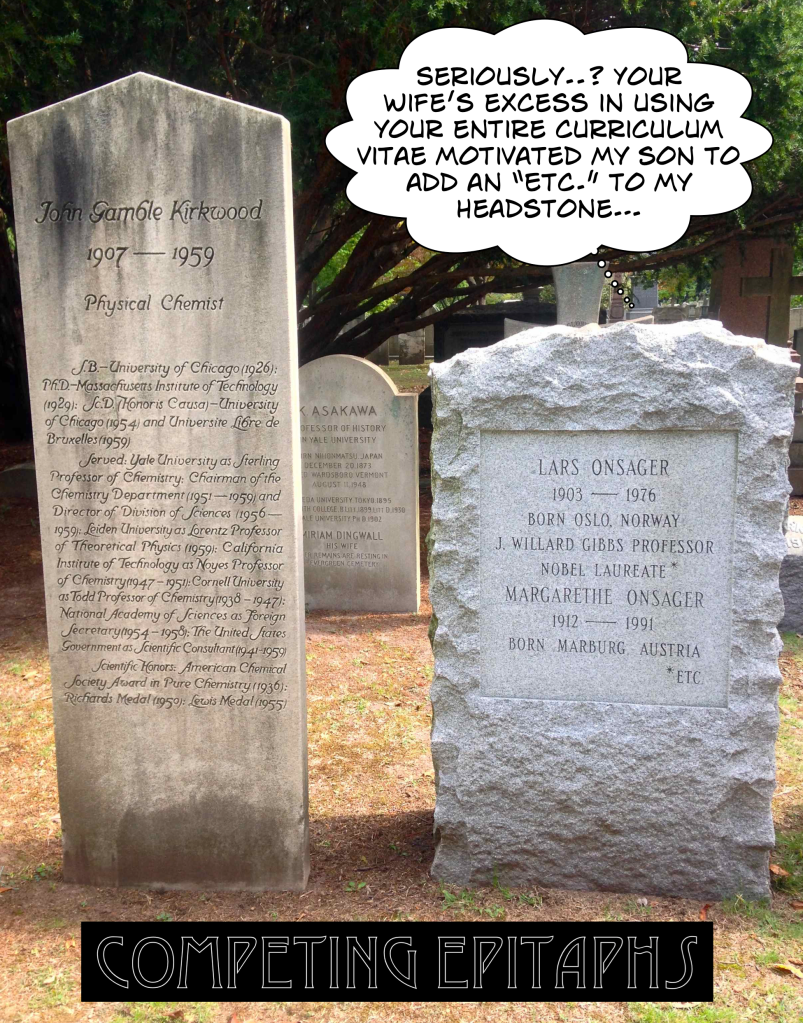
Have you already decided on an epitaph for your headstone? Or are you trusting others to sum up your life in familiar, traditional words of relationship? C.S. Lewis was of the opinion that a unique sentiment was most appropriate for such occasions.
My own decision has been made by default. At the present time I’m leaning towards simply using a military marker. They look distinguished, and the money that is saved can benefit the living, or perhaps one of the charities we support.
Basically, they have name, rank (I just want “Chaplain” instead of “Lieutenant Colonel”), dates and sometimes a very short personalized element. I think I’ll opt for the simple “Christian cross” which is familiar to those who have visited military cemeteries. I am tempted though, to use the agnus dei, even though it is listed as the official emblem of the United Moravian Church.
Due to the religious diversity (and confusion) in the United States, the Veterans Administration offers a theological smorgasbord of options. You can see the seventy-five options currently available here.
They include established American faiths such as Zoroastrianism and the Tenrikyo Church as well as more contemporary favorites Wicca and Eckankar (which claimed not to be a religion when I encountered its missionaries during my college years). Not to be ignored, are Humanism and its sibling, Atheism. For those preferring ethnic options, we have the Medicine Wheel, ancestor worship (African Ancestral Traditionalist), and the Hammer of Thor.
How Much Should an Epitaph Say?
I’ve seen some headstones that record only a name. Leaves only questions. Some give a brief observation, such as Boot Hill’s marker for Dan Dowd who perished in 1884. It records single word, “Hanged.”*
There are a few longer epitaphs, such as this one, sounding almost like an apology. “Here lies George Johnson hanged by mistake 1882. He was right we was wrong. But we strung him up and now he’s gone.” Sadly, they learned too late the horse they assumed he had stolen, was purchased legally.
In New Hampshire, there is a headstone with a 150 word inscription. Apparently, the woman’s husband had quite an axe to grind with a local congregation.
Caroline H., Wife of Calvin Cutter, M.D. Murdered by the Baptist Ministry and Baptist Churches As follows: Sep’t. 28, 1838; aged 33 She was accused of lying in church meeting by the Rev. D. D. Pratt and Deacon Albert Adams. Was condemned by the church unheard. She was reduced to poverty by Deacon William Wallace. When an exparte council was asked of the Milford Baptist Church, by the advice of their committee, George Raymond, Calvin Averill, and Andrew Hutchinson They voted not to receive any communication on the subject. The Rev. Mark Carpenter said he thought as the good old Deacon said, “We’ve got Cutter down and it’s best to keep him down.” The intentional and malicious destruction of her character And happiness as above described destroyed her life. Her last words upon the subject were “Tell the Truth and The Iniquity will come out.”
C.S. Lewis’ Epitaph
Lewis wrote a moving epitaph for his wife, Joy Davidman. It was based upon one he had written for his good friend Charles Williams. The phrase “Lenten Lands” was used by his stepson David Gresham, as the title of his story of his parents’ marriage.
Here the whole world (stars, water, air,
And field, and forest, as they were
Reflected in a single mind)
Like cast off clothes was left behind
In ashes, yet with hopes that she,
Re-born from holy poverty,
In Lenten lands, hereafter may
Resume them on her Easter Day.
To adorn C.S. Lewis’ own grave, his brother Warnie opted for simpler verse. It was taken from a passage in Shakespeare’s King Lear.
“Men must endure their going hence.”
C.S. Lewis wrote another noteworthy epigraph. It was in a poem by that very name. It was originally published in 1949 in Time and Tide magazine. It has been included in the collection of Lewis Poems as a stanza in “Epigrams and Epitaphs.” He shared it with his fellow poet, Ruth Pitter when it was first written, writing “I append my latest Short, your most obliged C.S. Lewis.”
My grave my pillory, by this blabbing stone
Forbidden to rest unknown,
I feel like fire my neighbours’ eyes, because
All here know what I was.
Think, stranger, of that moment when I too
First, and forever, knew.
In 2013, C.S. Lewis received the great honor of having a memorial stone placed in Poet’s Corner of Westminster Abbey. The inscription was chosen from one of his talks.
I believe in Christianity as I believe that the Sun has risen,
not only because I see it but because by it I see everything else.
I began with the question of what each of us might hope is inscribed as the legacy of our life. In truth, I don’t care if my marker even bears my name, since the Lord knows me as a member of his flock. But what I would like to see gracing my passing, are the words, “Well done, good and faithful servant” (Matthew 25:23).
The photograph adorning this post comes from side-by-side monuments for two Yale chemists. You can read the curious story about them, and the reason for the “Etc.” that adorns the second. Apparently it was added by the family at a later date, since they regarded “Nobel Laureate” as insufficient.
* The most famous epitaph in Arizona’s Boot Hill Cemetery reads “Here lies Lester Moore. Four slugs from a 44. No Les. No More.”
